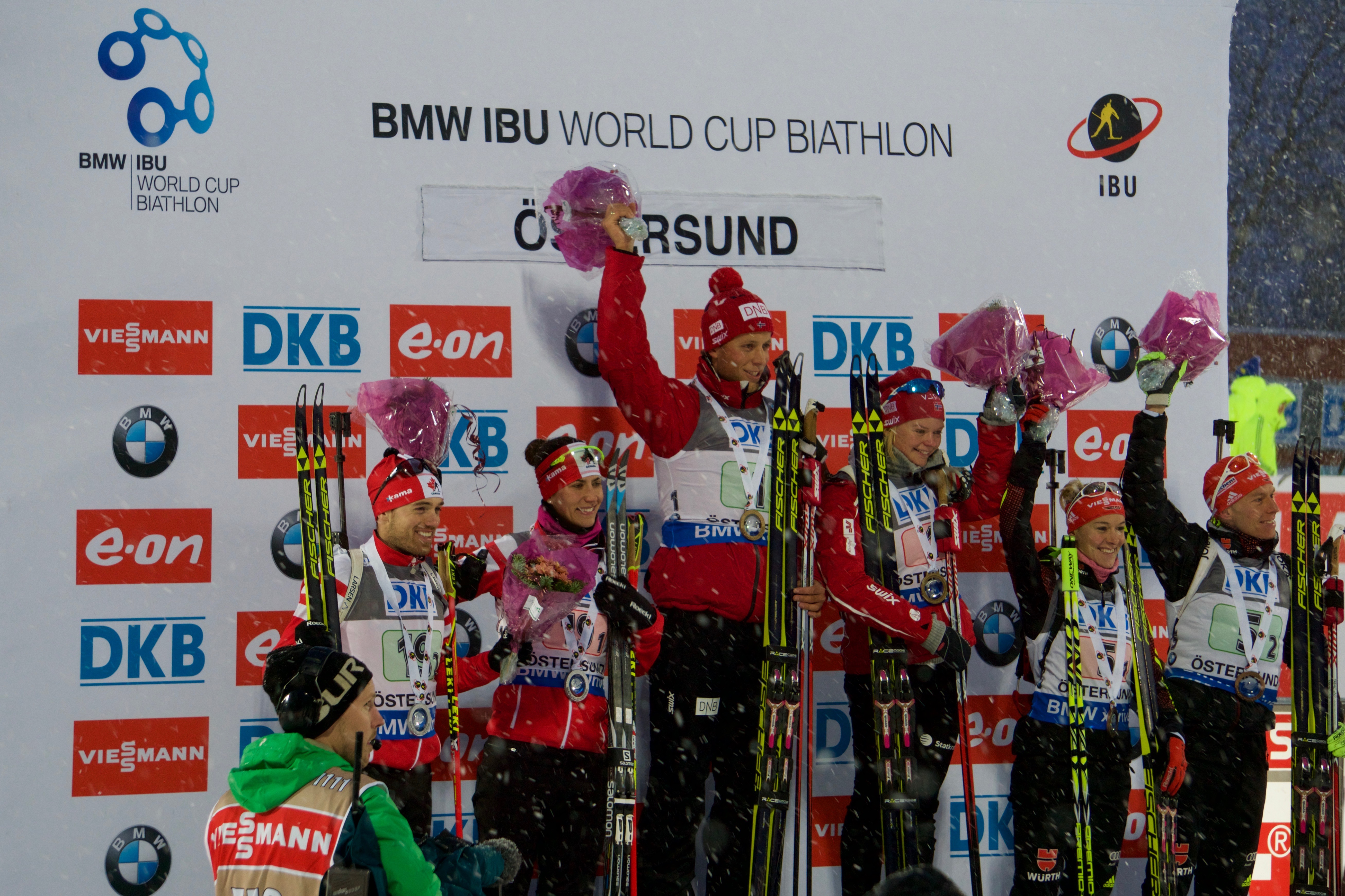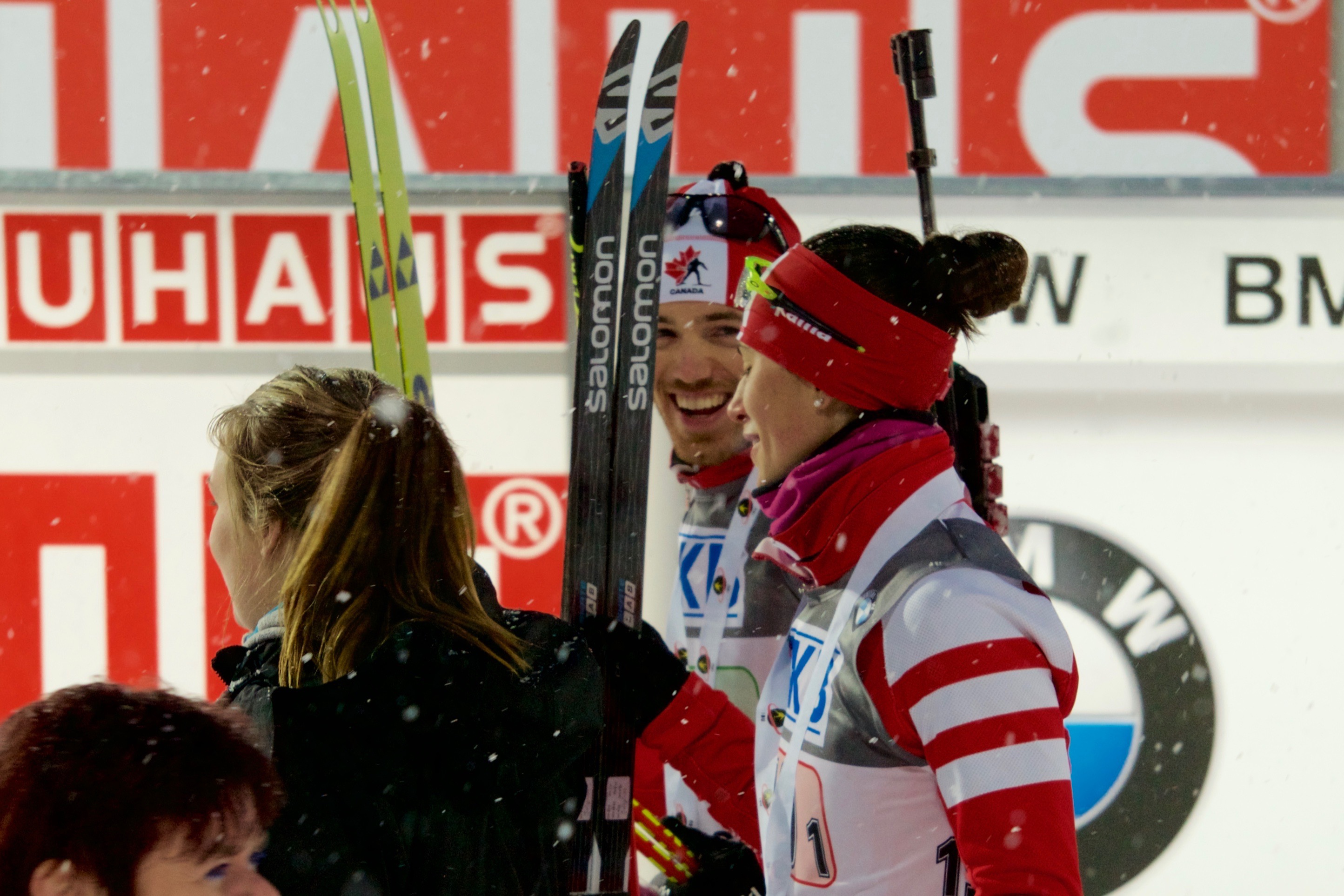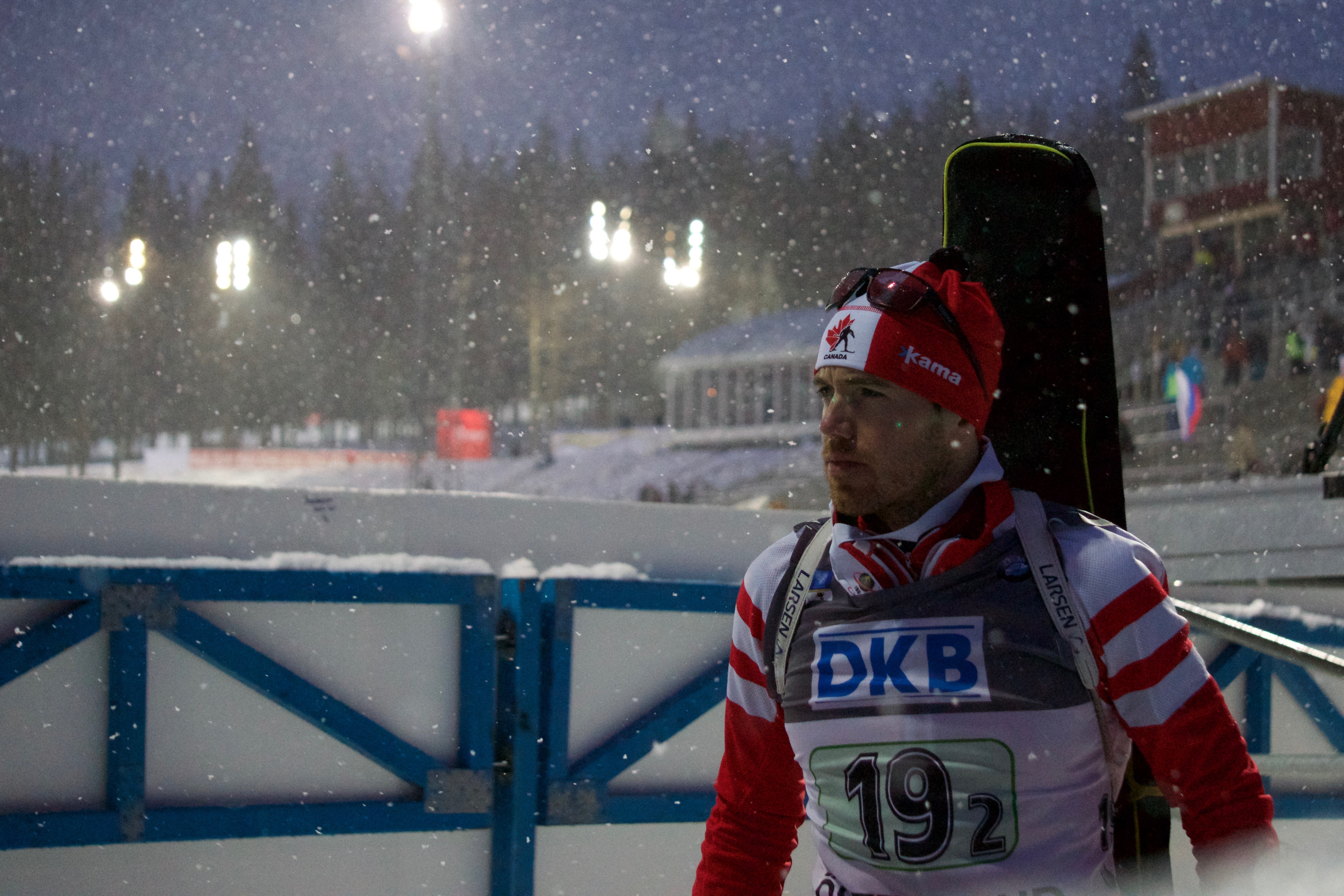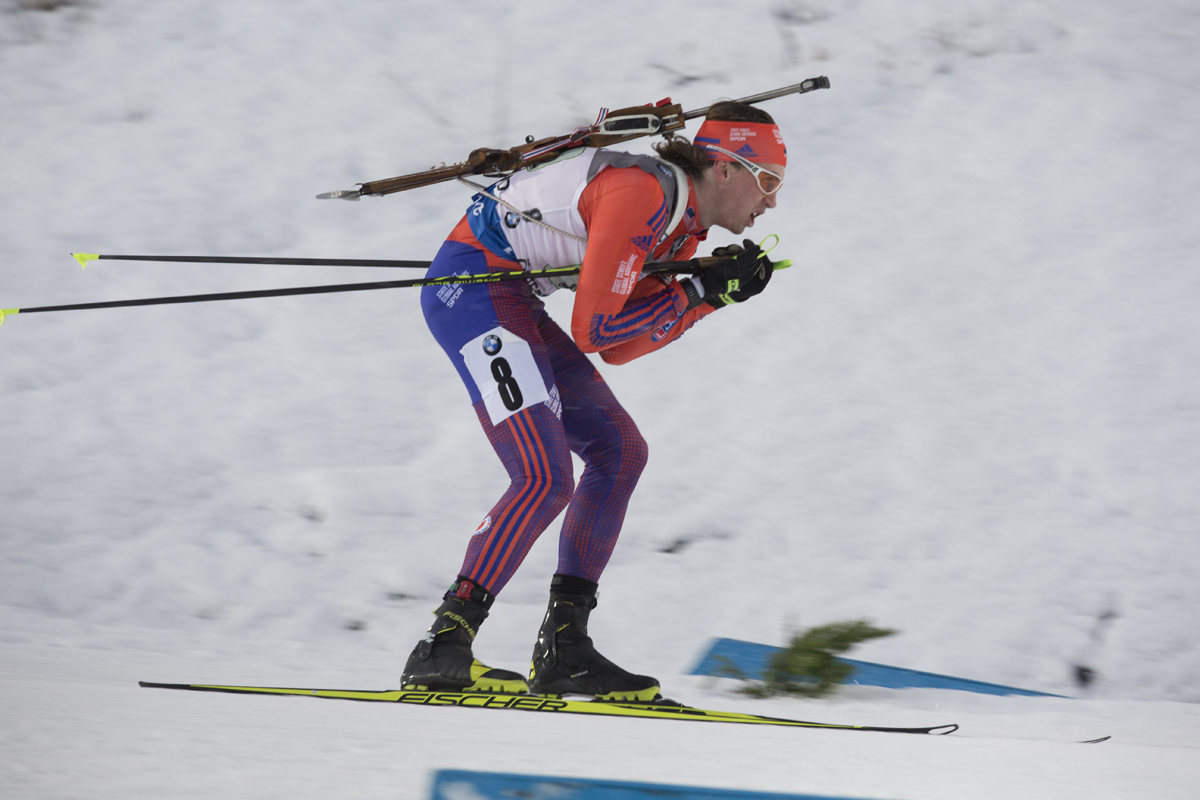
(Note: for our interviews with Rosanna Crawford and Nathan Smith, click here.)
The Canadian biathlon team made the most of a new competition scenario in Östersund, Sweden, on Saturday. Rosanna Crawford and Nathan Smith took second place in the single mixed relay to kick off the 2015-2016 World Cup season, the first relay podium ever for Canada at the World Cup level.
The event has been on the World Cup calendar once before, but never to open the season. And so with not one but two mixed relays on the schedule for the opening day of the 2015-2016 World Cup biathlon season, national teams were faced with a choice: put their two best athletes in the single mixed relay, where one man and one women each ski two very short two-stage relay legs?
Or try to put together the best two-man, two-woman mixed relay team to get on the podium and get twice as many Nations Cup points for a good result?
“Before the coaches left we had been throwing around some ideas,” said High Performance Director Eric de Nys, speaking from Canmore between the single mixed relay and the mixed relay, to be held later in the day.

“We knew that with either Rosanna and Brendan [Green] or Rosanna and Nathan, it would be a very strong team. So I think we decided to put Rosanna and Nathan in to see what would happen. It’s a newer event. Then with the mixed relay coming up in the afternoon, I think it was the best use of the athletes that we have.”
Teams seemed split on which strategy was best, and the outcomes varied, too. Norway used Lars Helge Birkeland and Kaia Wøien Nicolaisen, not assumed to be their best pair. But both performed admirably and took the win. It was just the seventh World Cup appearance of Nicolaisen’s career, but she thrived under the pressure.
Germany used a similar strategy, teaming up Maren Hammerschmidt with Daniel Boehm.
Other countries like France and Canada tried putting all their eggs in the single mixed relay basket. For France, Marie Dorin Habert and Simon Fourcade seemed to be winning the race in a blowout – until they were penalized four minutes. Fourcade had missed a shot and didn’t realize it – he wrote on his Facebook page that he looked and thought all the targets were black, so he must have looked at the targets of an athlete next to him – so he got up from the mat and not only skipped his penalty loop (a 2-minute penalty) but didn’t use his last spare round to try to knock it down (another 2-minute penalty).
Canada, on the other hand, seemed out of the picture early. Crawford used four spare rounds in her first leg and Smith used two, leaving them in eighth place almost a minute out.
To add to the chaos, Crawford couldn’t get from the waiting zone into the actual tag zone when Smith finished his first standing bout, so they lost a few seconds scrambling.

But Crawford cleaned both her second prone and second standing, and with Smith then cleaning prone as well, he found himself leading with one stage to go. (France was ahead of him, but didn’t count.)
“They kept their composure and did what they had to do,” De Nys said. “They didn’t get over excited if they missed or if people next to them missed. I think it’s a real testament to the work our sports psychologist has been doing with everybody. They just skied their own race, which is really what we came into the start of the season hoping for.”
After using two spares on the range, he gave up his lead to Birkeland. But leaving for the final loop with Daniel Boehm of Germany and Tobias Arwidson of Sweden, Smith kept his cool.
He and Boehm dropped Arwidson, and then coming into the finishing lanes Smith outsprinted the German to secure second place. The Canadians finished 11.9 seconds behind the Norwegian team, nine spare rounds total but no penalty loops distributed over the four shooting stages.
“The travel getting to [Sweden] was a little longer than we anticipated, so they’ve only been there for three days,” De Nys said. So this is a good testament to the work we’ve done this summer and a good confidence builder leading into the rest of the week and the rest of the World Cup season.”
It’s the best relay result ever for the Canadians on the World Cup. A previous high point as the women’s team of Crawford, Megan Heinicke, Megan Imrie, and Zina Kocher placing fourth in Annency, France, in 2013.
It’s not the first time Östersund has been good to the Canadians. It was there that Jean Philippe Le Guellec won his first World Cup competition in 2012.
The American team of Clare Egan and Sean Doherty finished 15th, +2:46.1.

Chelsea Little
Chelsea Little is FasterSkier's Editor-At-Large. A former racer at Ford Sayre, Dartmouth College and the Craftsbury Green Racing Project, she is a PhD candidate in aquatic ecology in the @Altermatt_lab at Eawag, the Swiss Federal Institute of Aquatic Science and Technology in Zurich, Switzerland. You can follow her on twitter @ChelskiLittle.



